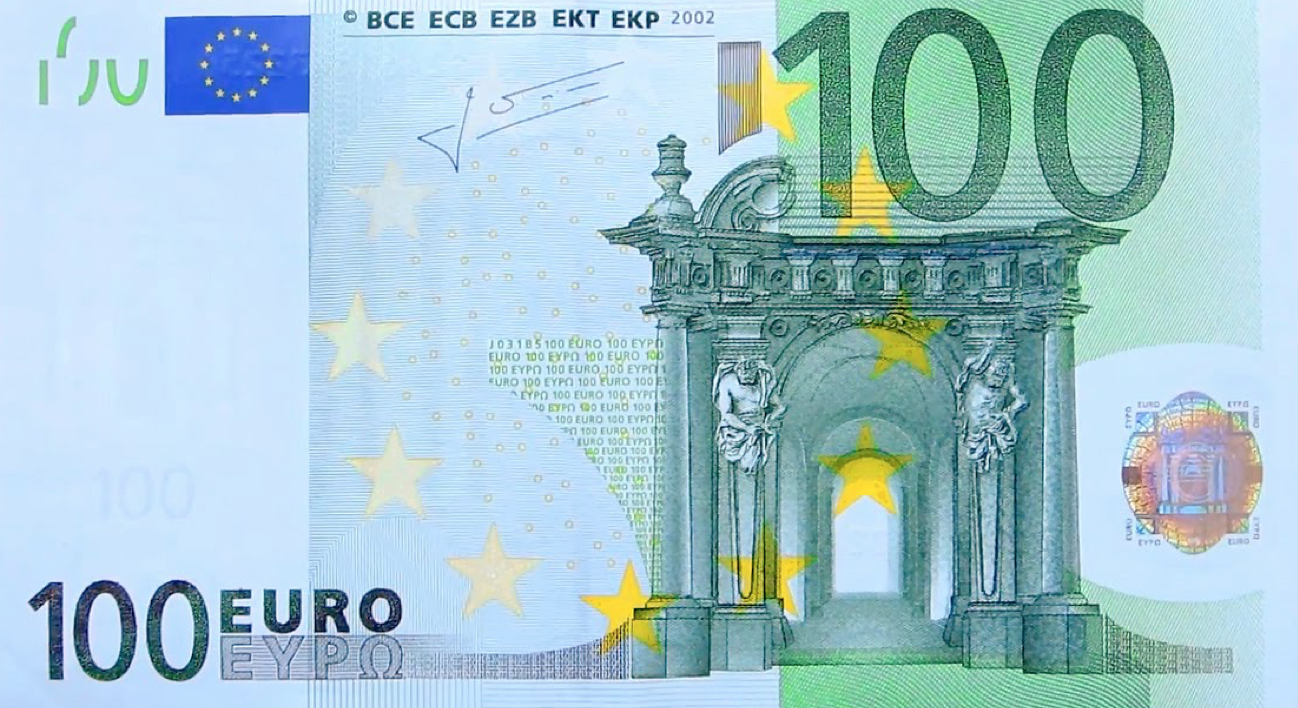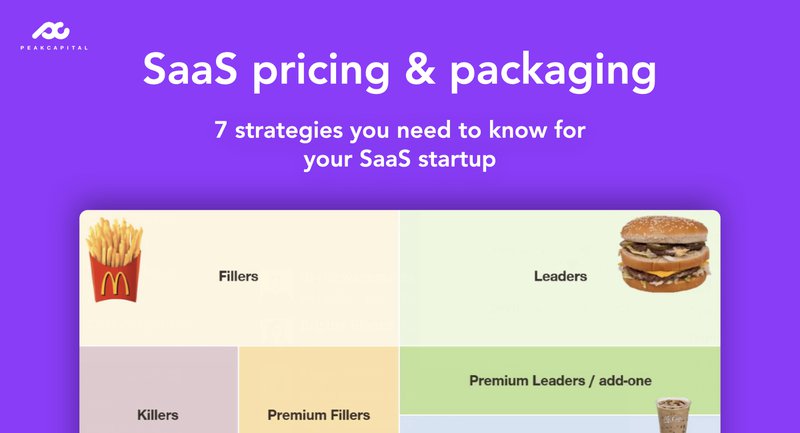
In the whirlwind of starting a software company, pricing and packaging is often an afterthought. With our years of experience as a SaaS investor, we know that finding the right price is difficult for early-stage startups, especially for those serving (or creating) a new market.
In monthly meetings with our portfolio companies, pricing strategy is a recurring topic for discussion. We decided to organize a Founders’ Session to support our founders around this topic. Every few months, we organize sessions where we bring together our portfolio founders and topic experts to spar, share perspectives, and gain new insights (and when the lockdowns are over again, we’ll have a beer and pizza too).
For the session on SaaS Pricing and Packaging, we brought in experts Ruben de Lange and Hong-May Cheng from Simon-Kucher & Partners. Ruben, Hong-May, and their colleagues have worked with over 30 unicorns 🦄, including Uber, Airbnb, Etsy, Github, and more.
During the session, we discussed pricing and packaging with founders and from the perspective of a SaaS Investor. In this blog post we’ll share the 7 key takeaways:
1️⃣ Differentiate your SaaS packages to tap into different customer needs
If your customers have different needs and (most importantly) willingness to pay, why would you package your product with a “one-size-fits-all” approach? Many companies differentiate customers based on demographics, but this won’t help you determine what the price should be, how customers use your product, or what to offer next. Instead, segment customers with a need-based approach.
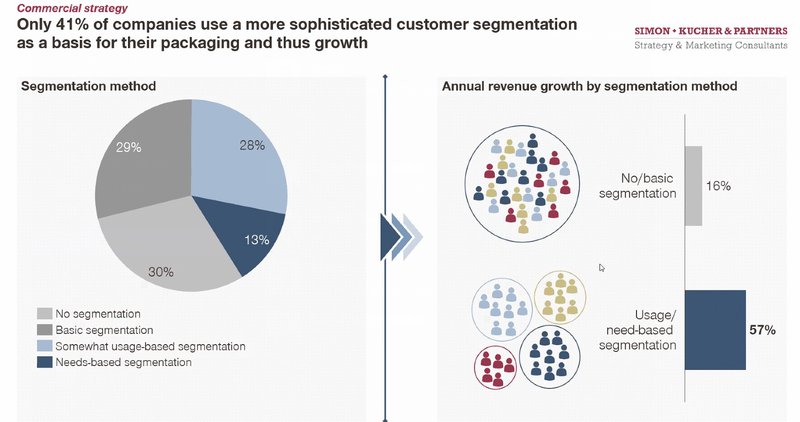
LinkedIn offers a great example of customer segmentation. They offer four premium packages, each with a very distinct target group: Career, Business, Sales and Hiring. Each package has a different price point and distinct features: Career users can see how they stack up versus other applicants, while recruiters get more advanced search options and reach out limits.
When creating your packaging, differentiate with customer needs and remember, offering more is not always better and can sometimes even hurt conversion.
2️⃣ Know your Big Mac
For an important lesson in pricing, we can learn from the King of burgers (pun intended): the Big Mac 🍔. People go to McDonald’s for the Big Mac: it’s what gets people in the door. All other products are fillers and add-ons. Know what products/features/services drive your customer’s willingness to pay.
Of course, a consultant workshop would not be complete without a 2×2 matrix. For packaging decisions, Simon Kucher created this value x adoption grid. Features that have high value and high adoption (like the Big Mac) are so-called leaders and are instrumental in a potential client’s buying decision. Low-value or low-adoption features are fillers and add-ons, respectively. These are nice-to-haves and can sweeten the buying decision, but will not drive it. Would you buy a Big Mac menu without the burger…?
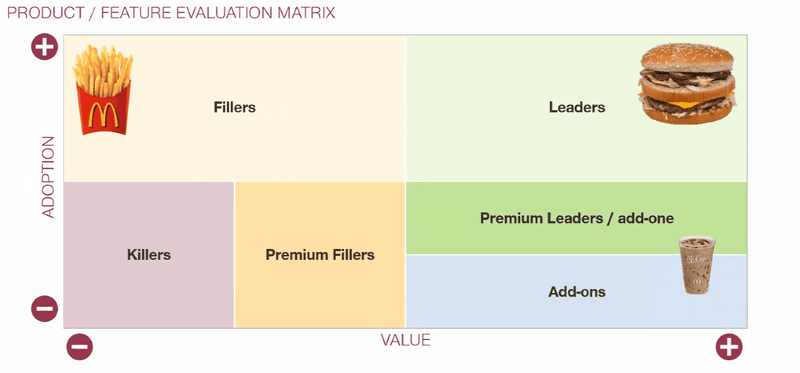
Now think of your own product. What are the killer features that your clients are raving about? What aspects of your product are indispensable? Structure your pricing packages around those, and sweeten them with some fillers and add-ons. Last but not least: combine learning 1 (segmentation) and 2 (big mac’s) to create distinct value-adding packages for different target groups. There’s a reason McD sells more menu’s than just the Big Mac menu 😉
3️⃣ Choose a price metric that scales with your value
The best way to make sure that your customer is happy is to align the price they pay for your product with the value they derive from your product. Too often, software companies simply price on users/seats, because that’s how everyone else does it. But is it really the number of seats that is driving the value for the customer?
During the session, we brainstormed with founders on how to price their solutions in a way that aligns and captures the driving force of their value. One of our portfolio companies currently prices based on users/month. This metric scales with the number of users, but does not scale with usage. A “single” customer can buy a monthly user/seat for your product while sharing this seat with their entire team. Customers can (and will) abuse your pricing system if no one is paying attention. Know your product’s worth and ensure your pricing reflects that…period.
4️⃣ It matters how you charge: pricing model and mindset
As a SaaS investor, we look through a lot of pricing pages and never get tired of seeing the classic enterprise “contact us” tier. So mysterious. Watch out as “contact us” could signal to customers that your pricing is customizable or even negotiable. Even if your premium packaging can be customized, it helps in negotiations to have an underlying price model.
In creating your pricing and packaging model, understand that how you charge customers makes a difference (check out the graph below). Check out the slide below from the Simon & Kucher presentation at our session. The slide shows three different pricing options for two different products (priced $10 and $200 respectively). For each item, there is one price that is clearly preferred by customers. The catch? All three price models result in the same price for each item. Even though the price is the same, there is a clear winner in terms of perceived price.
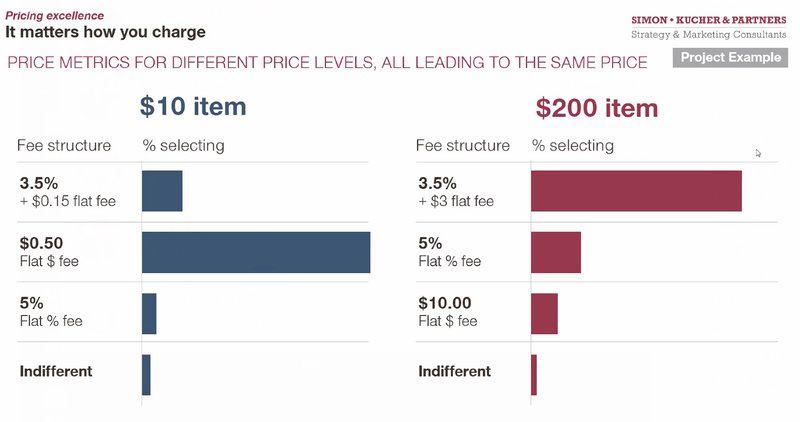
As a SaaS investor, we look at pricing to understand the true value that the product provides to customers and what they’re willing to pay for it. For pricing is not merely a mathematical exercise: it actually plays deep into the human psyche. Another study from S&K found that low-performing companies tend to overestimate the price sensitivity of their customers. In contrast, high-performing sellers recognize the value of the product they are selling and dare to charge higher prices. One explanation here is that a higher price indicates a higher perceived value. When you go out for a fancy dinner date, you don’t order the cheapest wine on the menu either, right?
5️⃣ Compare yourself with competitors to replace “gut feel” pricing
Knowing your position compared to competitors helps you understand your product’s value and pricing. Map yourself and your competitors on the matrix below, scoring each party’s elements along the axes with “perceived” price and value. If your product is in the “Hubris Zone”, you are basically overpricing your product and should either lower prices or deliver more value. However, if your product is in the “Attack Zone”, you know what to do: increase prices! Ideally, your value and pricing will be somewhat aligned and your product will be in the grey zone.
Once you plot yourself and your competitors on the graph, ask yourself: Is there a price difference between this competitor and my product? If so, why? What explains it? What justifies it? Visually seeing your product and its individual features amongst competitors allows you and your customers to understand your pricing and the reasoning behind it.
You can take this exercise one step further by bringing customers into the conversation. Ask: How can we match your needs? Do you think it makes sense to create X package? What do you think is cheap…expensive…too expensive? Would you buy X? For what price? Customer validation can be a goldmine of insights for your pricing and packaging.
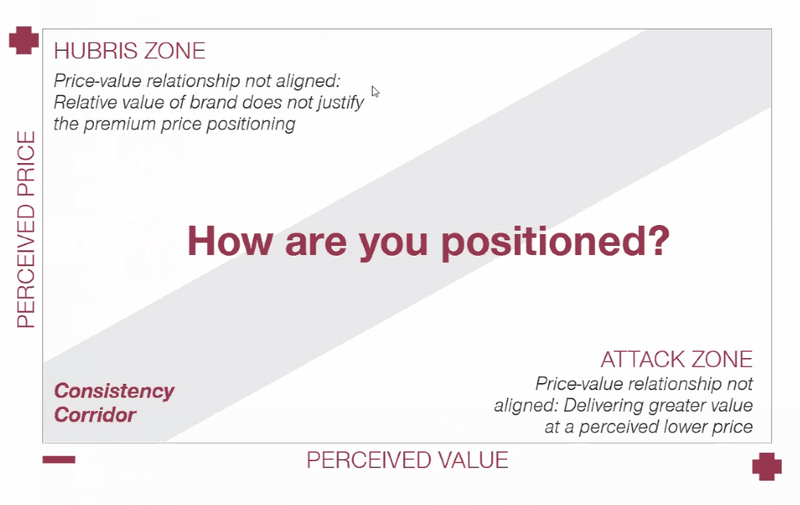
6️⃣ Create and structure a SaaS discounting system
Once you have thoughtfully created a pricing and packaging model, empower your sales team with a structured approach to discounts. Be clear on how much they can or should discount.
The chart below gives an example of a discounting chart that you can use to leverage negotiations: if customers ask for a discount, ask for something in return. For example, only provide discounts to customers if they can commit to a longer-term contract or upfront payment.
Giving your sales team tools for structured discounting will strengthen negotiations, open the door for escalation with customers, and strengthen the autonomy of your sales teams.
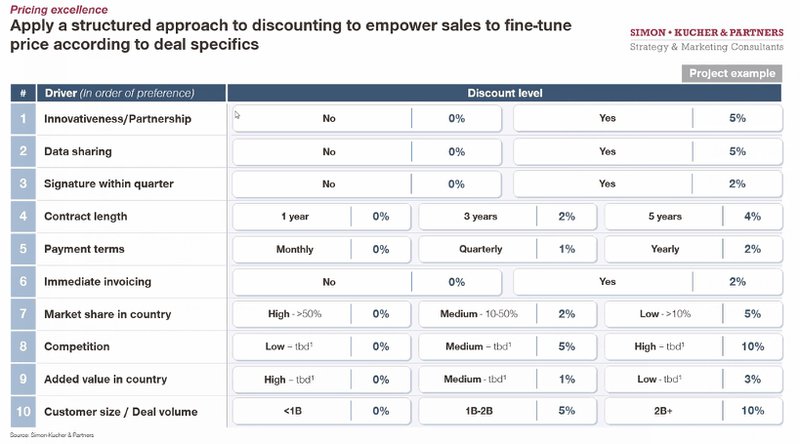
7️⃣ Think commercially about your SaaS product roadmap
Continuously releasing new features without revisiting prices is something we SaaS investors often see in early-stage companies, particularly in product-led founding teams. However, a new major feature release could also mean an opportunity to revisit pricing. When designing your product roadmap, consider the impact of new features on your pricing.
Before adding another feature, apply the Leader-Filler-Add-on method (remember #2: Know your Big Mac 🍔) to determine if this feature is worth the cost and effort. If the feature is a leader or filler, figure out who will value this addition and where this feature will fit into your differentiated packages. After mapping out your feature roadmap, ask yourself: Does this new feature justify a price increase? New feature releases could be the right moment to increase your pricing. As you solve pain points for your customers, their customers’ willingness to pay increases too. Keep this in mind with your overall product roadmap strategy.
Think about your feature roadmap and pricing roadmap in the same way. Apply these pricing and packaging strategies to create a pricing strategy and roadmap that scales with your features and added value.
TLDR:
Crafting thoughtful pricing and packaging for your product can immediately boost profits, customer satisfaction, and re-shape the way you view your business’s value.
Leverage these 7 tips from our founder’s session on SaaS pricing and packaging from pricing experts S&K and SaaS investor Peak:
- Differentiate your packages to tap into different customer needs (segment, segment, segment)!
- Know your Big Mac 🍔(Are your features leaders, fillers, or add-ons?)
- Choose a price metric that scales with your value (Align price and value to measure growth)
- It matters how you charge: model and mindset (How you price matters, where price signals value)
- Position yourself among competitors to replace “gut feel” pricing (Justify your market pricing)
- Create and structure a discounting system (Empower sellers and fine-tune your pricing)
- Think commercially with your product roadmap (Features should have a purpose, time, and place)
If you’d like for us at Peak to check out your own startup, you can easily reach me at [email protected] or on Linkedin to share your proposition, respond, or ask questions 😁
👀 Looking for a SaaS investor?
Our door is always open. We invite you to reach to our team and connect.
If you are a founder looking for funding, please do so via the form on our website; For your convenience, I also attached the form below. You’re busy building a company – and we don’t want to keep you hanging. Using this form helps us to streamline our process and get back to you as quickly as possible. We look forward to knowing more about your big idea and the team making it a reality!
